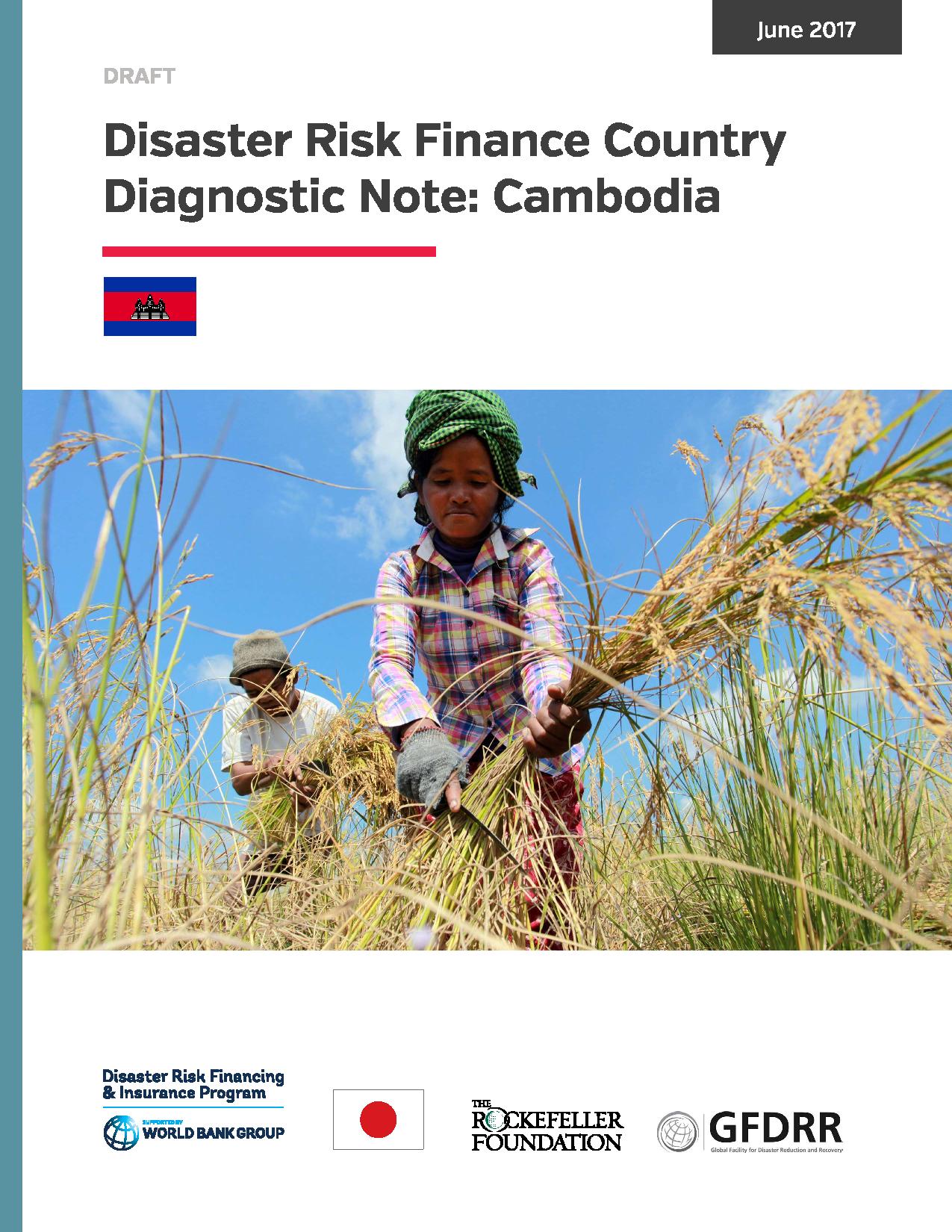The 2016 World Risk Index ranks Cambodia the ninth-most disaster-prone country in the world. Floods, storms, and droughts are the most prevalent hazards in the country, and they are expected to become more pronounced and severe under the influence of climate change. Typhoon Ketsana in 2009 and floods in 2011 and 2014 caused damages and losses of US$132 million, US$625 million, and US$357 million, respectively. Cambodia is also affected by the El Niño climatic pattern, which brought severe drought to the country in 2015–16 and affected sectors dependent on water resources.
Strengthening disaster risk finance (DRF) would help Cambodia systematically manage the financial impact of disasters and improve its post-disaster response financing capacity. Cambodia has limited financial capacity to respond to disaster events. A general contingency budget—approximately US$115 million over the past five years—is held by the Office of the Council of Ministers and can be used to finance unforeseen expenditure, including post-disaster expenditure. The Ministry of Economy and Finance estimates that less than 10 percent of this budget is used annually for disasters. Emergency response costs, particularly for floods, can cause significant short-term funding gaps and divert the use of public funds.

